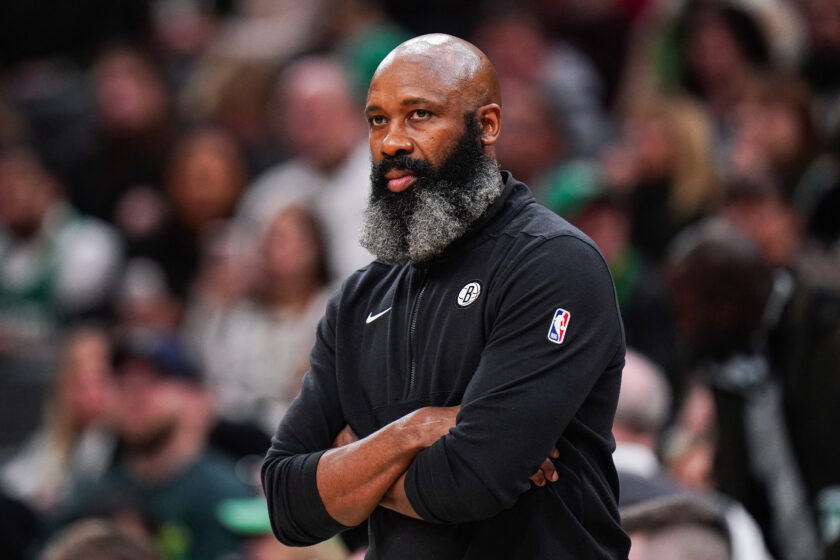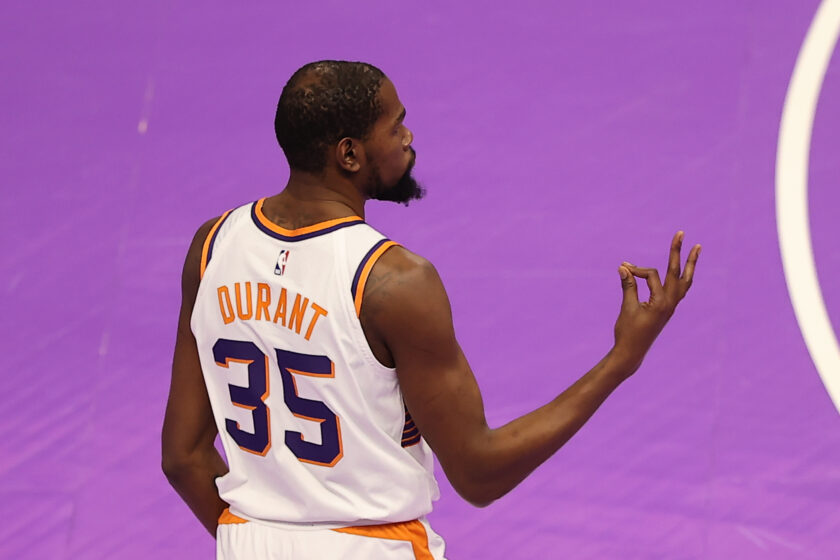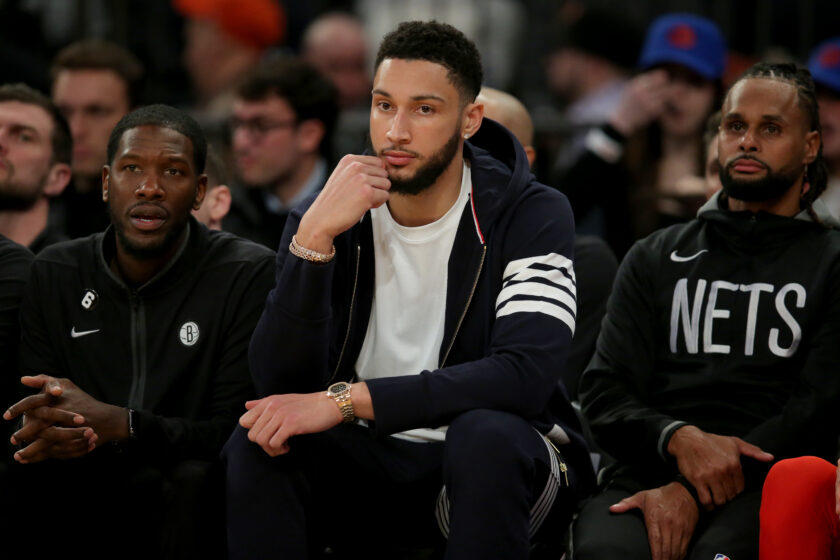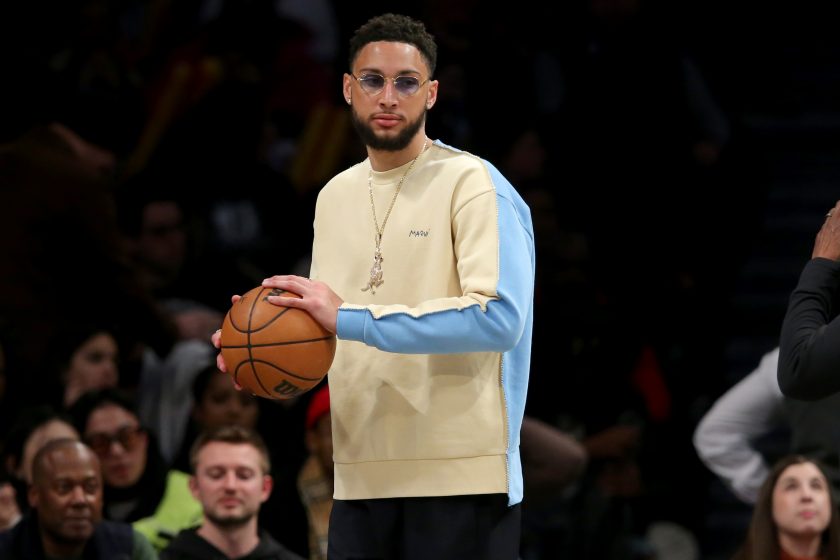Brooklyn Nets SF Joe Harris is so much more than just a shooter (Film Room)
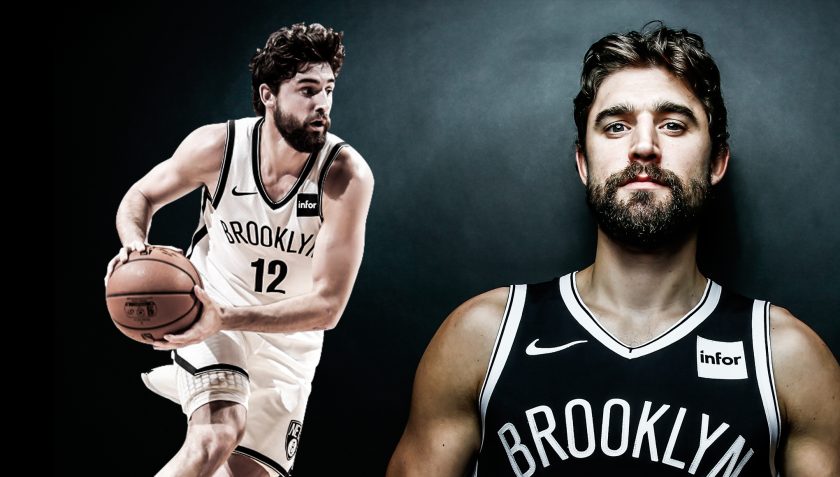
Joe Harris has gained notoriety among NBA circles for his league-best three-point shooting. The truth is: he brings a hell of a lot more to the table.
Joe Harris is in the midst of a slight shooting slump.
During Monday’s disappointing double-overtime loss, Harris scored 13 inefficient points on 13 shots. Even more uncharacteristic was Lumber Joe’s 1-for-6 performance from deep.
This wasn’t the first time that Harris looked out of sync. Against Utah, the Brooklyn Nets sharpshooter went 0-for-2 from three. In Atlanta, Harris shot a similarly disappointing 1-of-6 from deep. The small forward also struggled versus Charlotte, canning only 1 of his 4 attempted threes.
In fact, Harris has shot worse than 33.4 percent in six of the 12 total March games. After shooting the lights out in February at 55.1 percent, it’s been slightly discouraging watching his three-point numbers plummet by nearly 15 percentile points in March.
To the untrained eye, Harris is a specialist, a one-trick pony, a catch-and-shoot artist, if you will.
Those who watch him regularly know he’s more than that.
Joe Harris is a player who always needs to be accounted for. He’s the catalyst to Brooklyn’s motion-heavy, Mike Budenholzer-influenced offense. Sure, his shooting provides necessary spacing for his teammates.
But it’s the unheralded aspects of Joe Harris’ game that has allowed his Nets to ascend from the draft lottery to the playoffs.
Harris rarely takes three-point shots from the shorter-distance corners. Nearly 70 percent of Harris’ attempts have come from above the break. His most popular forms of action come via transition or high ball-screens in the halfcourt.

In the first clip, Harris loses his defender by sprinting in transition before planting his heels into the hardwood and quickly elevating for three. In the second, Harris curls around a questionable Ed Davis screen to free himself of Philly’s Landry Shamet before rising up at the top of the circle. These are the prototypical three-pointers from Harris that Brooklyn can rely upon unequivocally.
Harris averages five three-point attempts per game. 4.2 of those attempts come off the catch-and-shoot.
Much of Harris’ off-ball movement matches that of Kyle Korver. This isn’t the first time I’ve made the Korver-to-Harris comparison here at Elite Sports NY. Earlier this month, I went down the rabbit hole to juxtapose both players’ best seasons.
A couple of things separated Korver from Harris. The biggest was Lumber Joe’s ability to penetrate.
This year, Harris has driven the ball 494 times; the 3rd-most on Brooklyn’s roster. He’s also taken 216 field goal attempts off drives—making 50 percent of them. Even more impressive, Joe ranks within the top-20 of forwards in drives per game; next to guys like Julius Randle, Pascal Siakam, and the overlooked DeAndre’ Bembry.
For the guys named, driving with the ball is one of their main sources of offense. For Harris, scoring off the drive is merely auxiliary.
Harris’ ability to put the ball on the floor makes it tougher for opposing defenses to run him off the three-point line. His downhill tenacity and sweet stroke have formed a symbiotic relationship. Should a defender give him an inch of space, Harris can launch an open three in the blink of an eye. If a defender comes up too high, Harris can explode past them for a full-sprint layup.
Harris is an up-and-under aficionado. He regularly gets fans out of seats at the Barclays Center with his evasive under-the-basket excellence.

Harris isn’t much of a leaper. But he does have the uncanny ability to hang in the air for an extra second to avoid being swatted. This really throws off opposing bigs.

He’s also incredibly physical inside, capable of throwing around his 218-pound frame to his advantage. Through tempered movements of his shoulders, Harris can dislodge a defender on the low block. (see: the last clip in the video above).
Speaking of relocating defenders, Harris loves nothing more than taking advantage of mismatches with smaller defenders. Again, similar to before, Harris uses his frighteningly strong upper body to push defenders — like Lonzo Ball in the video below — out his way.

The first clip (in the video above) is particularly interesting. Harris catches the ball in the left corner with the Pelicans’ E’Twaun Moore defending. He then backs Moore all the way down to the low-block before executing the perfect head-fake and dip-in.
Wielding Harris on the low-block is a seldom-used form of offense that the Nets may want to look into. With such a burly composition for his 6-foot-5 frame, Harris has the ability to bully guards down low with relative frequency (similar to old-man Joe Johnson).
Ultimately, Brooklyn has chosen to avoid the post-up altogether. Only two Nets even qualify on the NBA.com/Player/Post-Up leaderboard, and Brooklyn ranks dead-last in cumulative post-ups per game. Still, though, the idea of using Harris in the occasional low-post mismatch is at least somewhat intriguing.
Driving with the ball adds variety to Lumber Joe’s scoring. It also unlocks the most overlooked aspect of Joe’s game: his passing.
Shooting 46.6 percent from deep attracts a lot of attention from a swarming defense. Subconsciously, defenders tend to swing their weight towards Brooklyn’s swingman if the ball is sent his way. Harris uses this to his advantage and has dished some particularly beautiful passes from the wing.

Harris seems to have a sixth sense when it comes to feeling an incoming double-team. More often than not, the three-point champ will launch a 15-foot laserbeam of a pass to a cutting big man. Notice how—in the first and fourth clips—Harris will sprint into the pick-and-roll, receive the handoff, and wait for the opportune moment before sneaking the ball into his big (in this case, Ed Davis and Jared Dudley).
Harris is going above and beyond what is expected of a spot-up shooter. His 2.4 assist average doesn’t tell the full story; Joe Harris might be the second-best passer on Brooklyn’s roster.
If, for whatever reason, you still don’t believe me, take a look at this compilation of flashy assists:

These are the types of plays that reinvigorate an NBA team. Harris has shown the consistent ability to wrap passes around two-to-three defenders that eventually land in the hands of Brooklyn’s bigs. When he’s feeling especially feisty, he’ll even add some no-look flair (see: the first clip featuring Marc Gasol or the fourth clip staring Maxi Kleber).
Neither one of Ed Davis nor Jarrett Allen is particularly savvy on offense. For the most part, their duties are to protect the rim and gobble up put-backs. It is imperative that Brooklyn keeps both players feeling involved on offense, as this will translate to greater effort on defense.
Harris does all of this and more through his improbable passes. By attracting multiple defenders off the drive, Lumber Joe makes scoring about as easy as it can get for both bigs. Given that neither Allen nor Davis can post-up or shoot from deep, being provided with wide-open dunk opportunities is a godsend.
There’s one more thing that makes Joe Harris so special: he has the clutch gene.
On Brooklyn’s roster, Harris ranks third on the team in crunch time points at 1.6 per game. More impressive are his shooting percentages; in the last five minutes of close games, Joe has hit 47.4 percent of his threes, has made 50 percent of his shots from the field, and has been strikingly calm from the line at 90.9 percent. His crunch-time free-throw percentage is a near 7-percent uptick from his overall 83.2 percent at the stripe.
So yes, Harris is even more lights-out when the game is close. However, my favorite bit of Joe Harris crunch time lore doesn’t have to do with his scoring. It’s how he crashes the boards.
Harris is by no means a tenacious offensive rebounder. He grabs just 0.7 offensive boards per game and has recorded a not-so-great 47.9 contested offensive rebounding percentage.
However—for whatever reason—when the lights get bright, Harris turns into this generation’s Charles Barkley.

This is when the legend of Joe Harris comes alive. Feeling the pressure of a close game, something seems to awaken inside the body of Brooklyn’s small forward. Not to say that he isn’t a high effort player, but Harris takes things up another level when crashing the boards late in games.
Rebounds like this take extra charisma to pull off. They also require a great deal of focus.
In all three plays, Harris flies in out of nowhere to secure the offensive board. From there, Joe goes up strong to finish tough layups through contact.
Again, folks, this is not normal to see from a spot-up shooter! At 27 years old, Harris is Brooklyn’s fifth-oldest player and is the eldest member of the Nets’ starting lineup. However, with just 256 NBA games under his belt, Harris is young in NBA years.
Regardless, with his relative age in mind, he’s become the defacto leader of Brooklyn’s young starting lineup. On possessions like the clips above, Harris executes veteran level machismo to create clutch put-backs off ugly misses.
[sc name=”Nets Center” ]There’s one specific play that summarizes why I love Joe Harris so much.
During Brooklyn’s first meetup with the Portland Trailblazers, the Nets were down by four with 5 minutes remaining in the fourth. The Trailblazers had toyed with Brooklyn all night long, and the Nets needed a big play to change the momentum of this game.
With 15 seconds remaining on the shot clock, the ball ended up in the hands of Caris LeVert.
LeVert who was (and still is) recovering from his gruesome November injury, launched a semi-contested three.
Like many attempts that night, the ball clanked off the back rim. The Blazers’ C.J. McCollum calmly elevated for a seemingly uncontested rebound.
Fortunately for Brooklyn, its most sturdy player entered stage right. Harris gathered some speed from the corner and lept high for the ball.

To Portland’s surprise, it was the Nets’ swingman who came down with the clutch rebound. Harris, who rarely holds the ball for long (1.82 seconds to be exact), quickly recognized that he was surrounded by three Blazer defenders and swung the ball back to an open LeVert.
LeVert—who has struggled with body control—wildly drove the lane before getting caught in mid-air. Panicking, LeVert tossed an ill-advised pass to the wing.
The ball was quickly stolen Portland’s Damian Lillard who then dribbled the ball at full speed in transition. With a declaration that would make James Harden proud, Lillard stutter-stepped his way to the rim (to lose D’Angelo Russell) before elevating for an open layup.
In flew Harris, disrupting a seemingly forgone Portland play. Harris, who averages just 0.2 blocks per game, careened the ball off the backboard for a highlight block.
These 20 seconds encompass why Joe Harris is my favorite player. He does whatever he can to help his team win, and in crunch time, he goes above and beyond his limits to make essential plays.
So much about Joe Harris’ game and is overlooked, and that’s okay.
It’s better if he’s Brooklyn’s little secret.
[sc name=”Nets Link Next” link=”https://elitesportsny.com/2019/03/27/jimmy-butler-says-no-extra-preparation-praises-brooklyn-nets/” text=”Jimmy Butler Praises The Brooklyn Nets” ]An NBA fanatic who specializes in the advanced analytics of the game. I cover the Brooklyn Nets here in the city. Follow me on Twitter for semi-witty basketball tweets. @MattBrooksNBA

